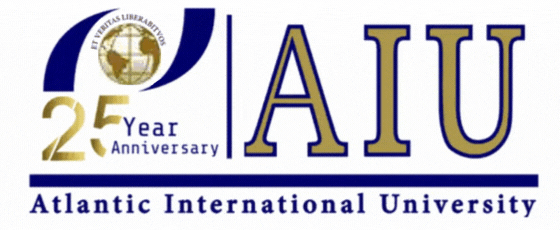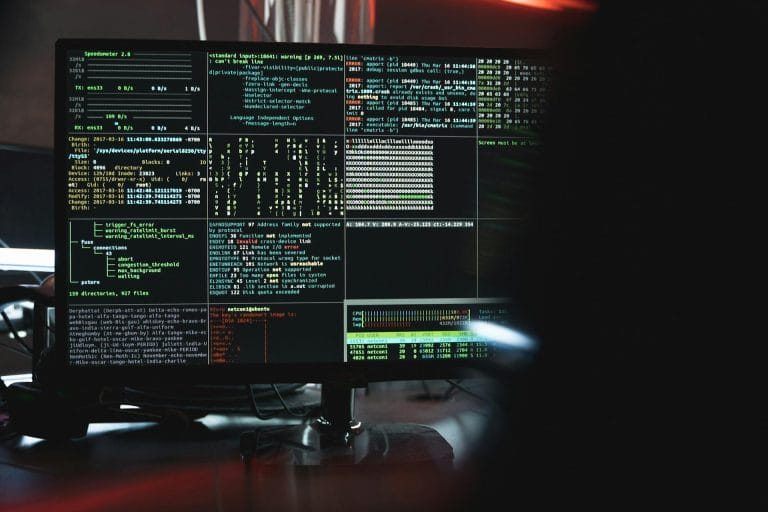- RESEARCHDistance Learning at AIU is enhanced by vast academic resources and innovative technologies build into the Virtual Campus: Hundreds of self-paced courses with video lectures and step by step lessons, thousands of optional assignments, 140,000 e-books, the Social Media & Networking platform allowing collaboration/chat/communications between students, and MYAIU develop students holistically in 11 areas beyond just academics.
- PROGRAMS OFFERED
- Areas of Study
- Courses and Curriculum
- Open Courses
- Register for a Program
- Associate Program
- Associate in Addiction Counseling
- Associate in Agriculture Food And Resources
- Associate in Anti Terrorism Security
- Associate in Behavior Analysis In Special Education
- Associate in Bioethics
- Associate in Climatology
- Associate in Cultural Theological Communication
- Associate in Culinary Arts
- Associate in Ecotechnology
- View all Associates Programs
- Bachelor Program
- Bachelors in Community Development
- Bachelors in Environmental Science
- Bachelor in Education (B.Ed, BS)
- Bachelors in Economics
- Bachelors in Entrepreneurship
- Bachelors in Financial Administration
- Bachelors in Human Resource Management
- Bachelors in Linguistics
- Bachelors in Nutritional Science
- Bachelors in Occupational Health and Safety
- Bachelors in Psychology
- View all Bachelor Programs
- Doctorate Program
- Doctor | of Biology (PhD)
- Doctorate in Business Administration (DBA, PhD)
- Doctor of Economics (PhD)
- Doctor of Electrical Engineering (D.Sc, PhD)
- Doctor of Finance (PhD)
- Doctorate in International Relations
- Doctorate in Information Technology (D.Sc)
- Doctor of Legal Studies (PhD)
- Doctor of Project Management (PhD)
- Doctor of Sociology (PhD, D.Sc)
- Doctorate in Sustainable Natural Resources Management
- View all Doctorate Programs
- Master Program
- Postdoctoral Program
- Postdoctoral in Animal Science
- Postdoctoral in Anti Terrorism Security
- Postdoctoral in Behavior Analysis In Special Education
- Postdoctoral in Bioethics
- Postdoctoral in Blockchain Technology and Digital Currency
- Postdoctoral in Business Management
- Postdoctoral in Cloud Computing
- Postdoctoral in Computer Engineering
- View all Postdoctoral Programs
AIU offers a wide range of majors in areas including the Arts, Business, Science, Technology, Social, and Human studies. More than 120 degrees and programs are available for adult learners at the associate’s, bachelor’s, master’s, doctoral and postdoctoral level. - VIRTUAL CAMPUS
Distance Learning at AIU is enhanced by vast academic resources and innovative technologies build into the Virtual Campus: Hundreds of self-paced courses with video lectures and step by step lessons, thousands of optional assignments, 140,000 e-books, the Social Media & Networking platform allowing collaboration/chat/communications between students, and MYAIU develop students holistically in 11 areas beyond just academics.
- ALUMNI
The world is YOUR campus!”, that is the message of AIU’s month magazine Campus Mundi. Hear the voices and see the faces that make up AIU. Campus Mundi brings the world of AIU to you every months with inspirational stories, news and achievements by AIU members from around the world (students and staff are located in over 200 countries).
The Role of Drones in Environmental Conservation

Interested to know in what ways do drones contribute to reforestation and habitat restoration?
Can drones improve the efficiency of wildlife protection and anti-poaching efforts?
Find out, how can drones be used to engage the public and raise awareness about environmental conservation?
Use your research skills and write about how drones transformed environmental monitoring and data collection in marine ecosystems, and the specific benefits they offer compared to traditional methods. Ensure that the answer covers the following points on technological advancements and how traditional methods differ from drones, the impact of drones on the conservation strategy and the future prospect.
(Login to your student section to access the AIU Additional Resources Library.)
The Role of Drones in Environmental Conservation
Technological advancements have dramatically transformed various sectors in the past decade, and environmental conservation is no exception. Drones are among the most revolutionary tools, and they have become indispensable in preserving our planet’s biodiversity and natural resources. These aerial marvels offer unprecedented capabilities in monitoring, protecting, and restoring the environment, reshaping how conservation efforts are planned and executed.

Source: pat.org.UK
Precision Monitoring and Data Collection
One of the primary roles of drones in environmental conservation is their ability to monitor ecosystems with remarkable precision. Traditional ecological monitoring methods, such as ground surveys and human-crewed aircraft, are often limited by accessibility, cost, and the potential to disturb wildlife. Drones, however, can cover vast and remote areas with minimal disruption, capturing high-resolution images and videos that provide detailed insights into the health of ecosystems.
For instance, drones equipped with multispectral and thermal cameras can assess the vitality of forests by detecting stressed vegetation that may be invisible to the naked eye. This capability is crucial for early detection of disease, pest infestations, and climate change impacts. In marine environments, drones can monitor coral reefs, track the movements of aquatic animals, and assess water quality, providing valuable data that can inform conservation strategies.

Percentage of wildlife behavioral responses to aerial vehicles in relation to their main habitat
Source: Cambridge.org
Wildlife Protection and Anti-Poaching Efforts
Drones are also pivotal in wildlife protection and anti-poaching efforts. Poaching remains a significant threat to many endangered species, and traditional anti-poaching patrols are often hampered by the vast and challenging terrain they must cover. Drones can quickly and efficiently survey large areas, identify potential poaching activity, and relay real-time information to rangers and law enforcement.
In Africa, drones equipped with night-vision cameras are being used to monitor rhinoceros and elephant populations, which are frequent targets for poachers. By detecting and tracking illegal activities, these drones help authorities respond swiftly and effectively, significantly reducing poaching incidents.
Habitat Restoration and Reforestation
The role of drones extends beyond monitoring and protection; they are also instrumental in habitat restoration and reforestation efforts. Reforestation is critical to combating climate change and preserving biodiversity, but traditional planting methods can be labor-intensive and inefficient. Drones offer a solution by enabling rapid, large-scale planting of trees and vegetation.
Companies like BioCarbon Engineering are leveraging drone technology to plant trees in areas inaccessible by foot. These drones can grow thousands of trees daily by shooting seed pods into the ground, drastically accelerating reforestation projects. Moreover, drones can monitor the growth and health of these newly planted trees, ensuring that restoration efforts are successful and sustainable.

Applications for drones
Source: British Ecological Society
Disaster Response and Environmental Damage Assessment
Natural disasters such as wildfires, hurricanes, and oil spills can cause widespread environmental damage, and timely response is crucial to mitigate their impact. Drones provide a rapid and effective means of assessing damage and guiding response efforts. For example, after a wildfire, drones can map the extent of the burn area, evaluate the damage to vegetation and wildlife habitats, and identify areas needing immediate restoration.
Similarly, in the aftermath of an oil spill, drones can monitor the spread of oil, assess the impact on marine and coastal ecosystems, and help coordinate cleanup operations. The real-time data collected by drones is invaluable for environmental agencies and organizations, enabling them to make informed decisions and prioritize their efforts.
Engaging the Public and Raising Awareness
Beyond their practical applications, drones also engage the public and raise awareness about environmental conservation. Stunning aerial footage captured by drones can showcase the beauty and diversity of natural landscapes, bringing attention to areas that require protection. This visual storytelling can inspire action and support for conservation initiatives, fostering a greater connection between people and the environment.
Conclusion
Drones have undeniably revolutionized environmental conservation, offering innovative solutions to conservationists’ most pressing challenges. From precision monitoring and wildlife protection to habitat restoration and disaster response, drones provide a versatile and powerful tool for preserving our planet’s natural heritage. As technology advances, the potential for drones in environmental conservation will only grow, promising a future where humans and nature can coexist more harmoniously. By embracing these aerial allies, we can ensure that our efforts to protect and restore the environment are more effective, efficient, and impactful than ever.
If this article triggers any interest in environment conservation using drones, then AIU offers a list of Mini courses, Blogs, News articles and many more on related topics that one can access such as;
Ecology and Environmental Biology
What is Biodiversity? (aiu.edu)
Drones The Complete Manual 1st Edition (aiu.edu)
AIU also offers a comprehensive array of recorded live classes spanning various subjects. If any topic piques your interest, you can explore related live classes. Furthermore, our expansive online library houses a wealth of knowledge, comprising thousands of e-books, thereby serving as a valuable supplementary resource.
Using Nanoscience for environmental repair and preservation by Tyler Gleckler
Characteristics attitudes and environment for effective problem solving by Antreas Naziris
Environmental Health, Impact of environmental factors on Human health by Dr Omer Farooq K
Improving coverage method of autonomous drones for environmental monitoring
Agricultural Innovation and the Role of Institutions: Lessons from the Game of Drones
Drones Help Fight Climate Change
References
Environmental Applications: How Drones Contribute to Conservation (insidefpv.com)
Conservation Drones are Helping Environmentalists Make Huge Strides in Wildlife Mapping (dji.com)
Top 5 Drones for Environmental Conservation: Impact & Success (hyscaler.com)
Drones | Free Full-Text | Drones for Conservation in Protected Areas: Present and Future (mdpi.com)
Drones In Wildlife Conservation (discoveryoftech.com)
Emerging Roles of Drones in Environmental Conservation – PAT Testing
8851-Flyer.pdf (cifor-icraf.org)
Drones | Special Issue : Drones for Biodiversity Conservation and Ecological Monitoring (mdpi.com)
Reminder to our Dear Students,
Please ensure you are logged in as a student on the AIU platform and logged into the AIU Online
Library before accessing course links. This step is crucial for uninterrupted access to your learning
resources.
AIU Success Stories







Contact Us Today!
Begin Your Journey!
AIU’s Summer of Innovation and Growth gives you the ability to earn up to $5000 in tuition credit by completing free lessons and courses.
Whether you’re looking to acquire new skills, advance your career, or simply explore new interests, AIU is your gateway to a world of opportunities. With free access to 3400 lessons and hundreds of courses the ability to earn credits and earn certificates there’s no better time to start learning.
Join us today as a Guest Student and take the first step towards a brighter, more empowered future.
Explore. Learn. Achieve.

Contact Us
Atlantic International University
900 Fort Street Mall 905 Honolulu, HI 96813 [email protected]
Quick Links
Home | Online Courses | Available Courses | Virtual Campus | Career Center | Available Positions | Ask Career Coach | The Job Interview | Resume Writing | Accreditation | Areas of Study | Bachelor Degree Programs | Masters Degree Programs | Doctoral Degree Programs | Course & Curriculum | Human Rights | Online Library | Representations | Student Publication | Sponsors | General Information | Mission & Vision | School of Business and Economics | School of Science and Engineering | School of Social and Human Studies | Media Center | Admission Requirements | Apply Online | Tuition | Faculty & Staff | Distance Learning Overview | Student Testimonials | AIU Blogs | Register for Program | Privacy Policy | FAQ



















